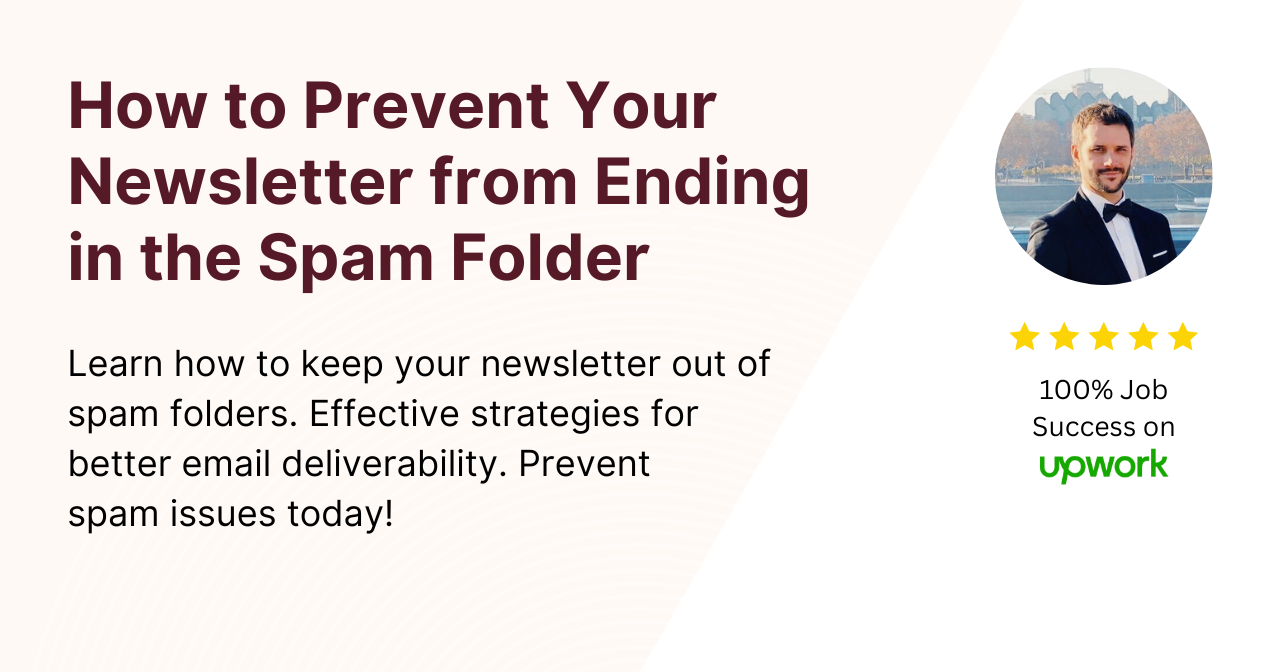A significant challenge that email marketers face is ensuring that their newsletters reach the recipient’s inbox rather than being relegated to the dreaded spam folder.
In this article, we will explore effective strategies to prevent your newsletter from going to spam and boost its deliverability.
Understanding the Spam Folder
Before delving into preventive measures, it’s essential to understand why newsletters often end up in the spam folder.
Email service providers employ sophisticated algorithms to filter incoming messages, and certain characteristics can trigger the spam filter.
Common reasons include:
1. Poor Content Quality
- Recognizable spammy words or phrases.
- Excessive use of capital letters and exclamation marks.
- Low-quality images or attachments.
2. Sending Practices
- Sending emails to unverified or purchased lists.
- High bounce rates.
- Irregular sending patterns.
3. Lack of Engagement
- Low open rates.
- Low click-through rates.
- Minimal replies or interactions.
Steps to Prevent Your Newsletter from Going to Spam
Now that we understand why newsletters end up in the spam folder, let’s explore actionable steps to improve deliverability and keep your emails in the inbox.
Create Quality Content
Your newsletter’s content plays a pivotal role in determining its fate. Craft engaging, relevant, and valuable content that subscribers look forward to receiving. Avoid using spammy language and focus on providing real value.
Build a Quality Subscriber List
Building a high-quality subscriber list is crucial. Ensure that subscribers opt in willingly and regularly clean your list to remove inactive or invalid email addresses. Quality over quantity is key.
Authenticate Your Domain
Domain authentication, such as SPF, DKIM, and DMARC records, helps email providers verify the legitimacy of your emails. Implement these authentication methods to establish trust.
Avoid Spam Triggers
Steer clear of spam triggers by avoiding excessive use of capital letters, exclamation marks, and misleading subject lines.
Make your emails sound genuine and trustworthy.
Monitor Email Engagement
Regularly monitor your email engagement metrics, such as open rates, click-through rates, and unsubscribe rates.
Use these insights to refine your email marketing strategy.
Send Consistently
Maintain a consistent sending schedule.
Erratic sending patterns can raise red flags with email providers.
A predictable schedule builds trust with subscribers and email filters.
Use Double Opt-In
Implement a double opt-in process where subscribers confirm their subscription via email.
This extra step ensures that subscribers genuinely want to receive your newsletters.
Segment Your Audience
Segmenting your email list allows you to send personalized content to specific groups.
This targeted approach increases engagement and reduces the likelihood of spam complaints.
Regularly Update Contact Information
Encourage subscribers to update their contact information if they change their email addresses.
Outdated information can lead to bounces and spam reports.
Conclusion
Preventing your newsletter from ending up in the spam folder requires a proactive approach that includes quality content, list management, authentication, and monitoring.
By following these guidelines, you can significantly enhance your email deliverability and build stronger connections with your subscribers.
FAQs (Frequently Asked Questions)
1. What are some common spam trigger words to avoid in email newsletters?
Words like “free,” “guaranteed,” and “buy now” are often associated with spam and should be used sparingly.
2. How can I improve my open rates?
Engage your subscribers with compelling subject lines, valuable content, and a consistent sending schedule.
3. Is it essential to clean my email list regularly?
Yes, cleaning your list helps remove inactive or invalid addresses, improving your email marketing performance.
4. What is a double opt-in process, and why is it important?
A double opt-in requires subscribers to confirm their subscription via email, ensuring they genuinely want to receive your newsletters, reducing spam complaints.
5. How can I track my email engagement metrics effectively?
Use email marketing software that provides analytics on open rates, click-through rates, and other key metrics to monitor engagement.
